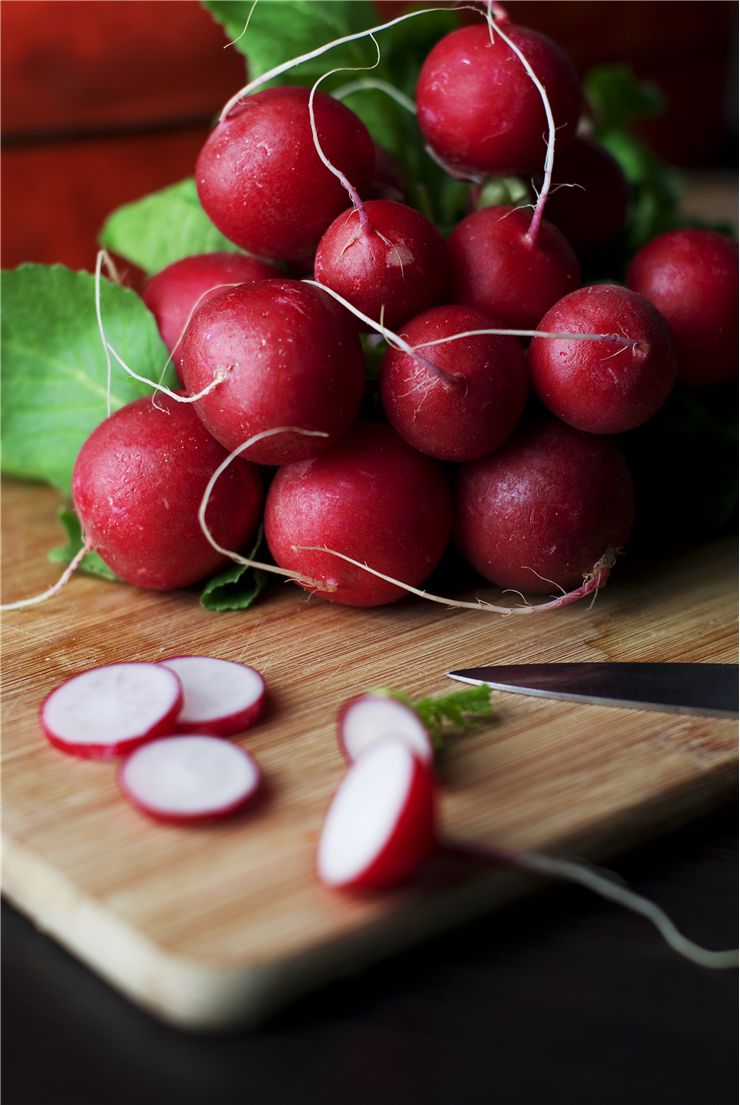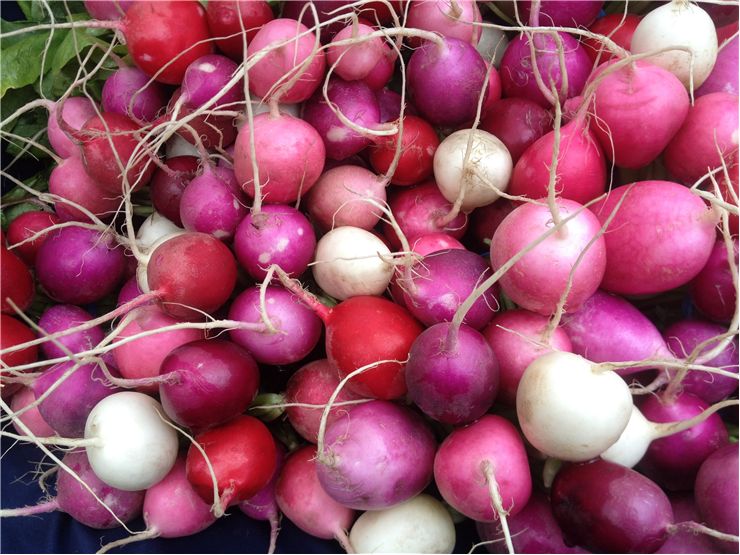Radish Nutrition Facts - Health Benefits of Radishes
Radish (from the word “radix” which means root) is a vegetable whose root is edible and is full of vitamins and other nutritional values. It is a fast-growing, annual, cool-season crop which matures between three and seven weeks depending on the temperature in which it grows (in colder weather it needs more time to grow). After they are harvested, radishes can last up to two months if kept at 0°C.
There are four main types of radishes, depending on the time when they are planted: summer, fall, winter, and spring radishes. They can also be subdivided by shape and color. Some of the radishes by name are April Cross, Bunny Tail, Cherry Belle, Champion, Red King, Sicily Giant, Snow Belle, White Icicle, French Breakfast, Plum Purple, Easter Egg, Gala, Roodbol Black, and Spanish Round.

We didn't know for sure when people started eating and cultivating radishes. We know that they originated from the southeast Asia because that is where wild variants of radishes were discovered. From there they spread to India, central China, and Central Asia and we know that they appeared in written history in 3rd century BC. Ancient Greek and Ancient Roman agriculturalists mentioned them in 1st century AD and from there they spread through Europe. They were also one of the first vegetables to be introduced to the Americas. Since then they are in use all over the world.
Radish is usually used as a salad but in some dishes, radish is steamed or cooked.
Except for food in Japan and Korea, radish is used to make children's dolls while in Mexico citizens of Oaxaca celebrate the Night of the Radishes on December 23rd every year when they carve radishes into religious and traditional figures, buildings and other objects and display them in the town square.
A cup of radishes has 8.6 mg of vitamin C or 14% of recommended daily intake. It helps health immunity and works as an antioxidant fighting free radicals which destroy cells and make us older. It also rebuilds tissues, blood vessels and maintains bones and teeth.
Radish acts as a powerful detoxifier helping liver and stomach. It purifies the blood and eliminates toxins and waste. It can help treating jaundice by it removing bilirubin and keeping its production at a normal level and by reducing the destruction of red blood cells which is a symptom of jaundice. For this is an especially good black radish.
High fiber in radishes makes them a useful for helping digestion, water retention, and it treating constipation.
As a natural diuretic radish can be used to treat and even prevent urinary tract infections.
Fresh root of radish has around 16 calories per 100 grams which make them ideal for diets for weight loss.
Some say that if you apply a paste of radish mixed with common salt to the place where scorpion bit you the pain will reduce. It can also lower the pain caused by the bites of some insects like mosquitos and bees.
Radishes are also rich in potassium which helps regulate blood pressure.

Radish is very low on the glycemic index, and diabetics can eat them without fear for their insulin levels.
Some people use the juice of black radish as a treatment for dandruff because, according to them, it helps in reducing excess secretion of sebum, stimulates the hair roots and with that slows down problems like hair loss.
Radish can contribute to relieving congestion from the respiratory system and with that help person with breathing disorders like asthma or bronchitis.
As a detoxifier and full of vitamin C, radish can help by lowering chances to contract different forms of cancer like kidney, mouth, stomach, and colon cancer.

